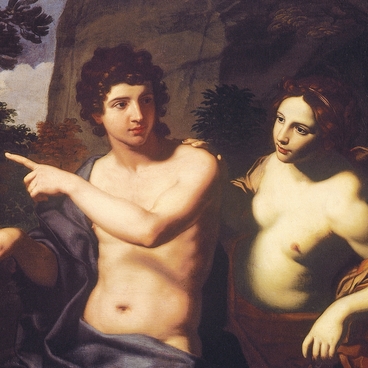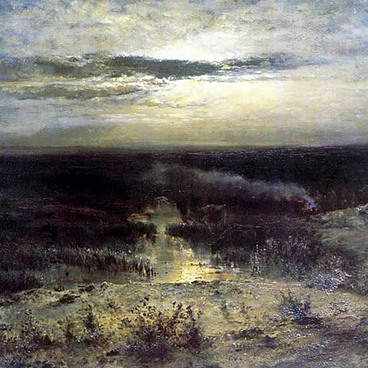Alexey Gavrilovich Venetsianov was not only a talented painter and a cartoonist, but also a teacher. One of his famous mentors was Vladimir Lukich Borovikovsky, and among his apprentices were Grigori Vasilyevich Soroka, Nikifor Stepanovich Krylov and Sergey Konstantinovich Zaryanko. However, none of the above listed men is the author of the painting, which is recognized as a token of ‘Venetsianov’s school’.
According to art experts, Alexey Vasilyevich Tyranov is the closest to the style of the unknown artist. His drawings also are remarkable for their firm shapes modelled by the play of light and shade. For example, the portrait of his colleague Alexander Alexandrovich Alekseyev.
Art experts still are not sure, who created the Boy with a Flute. During his life, Alexey Gavrilovich Venetsianov trained over 70 apprentices from various strata of the society. His creative workshops took place either in Saint-Petersburg studio or in Tver estate of the master.
He taught painting to Russian and Ukrainian young men descending from the families of landlords, clergy or lower middle classes. In addition, there were seven children from serf families liberated in the process of their training: “either by collection of funds, or by home lotteries and by convincing their masters”.
There are several details evidencing that the painting features a boy from common people of the 18th-19th centuries. First, his rather long hair is parting in the middle. Second, his blue kaftan (same as kazakin or sibirka) fastened with the hooks used to be popular with servants. Third, the wind musical instruments were popular with home orchestras.
Thus, this personage fits with the poetical learning of the rural life via focusing on the beauty of everyday living, which was characteristic first for the work of the master himself, and further on – for his apprentices. The focused their idyllic attention to the village – its people, interiors and landscapes.
The historians believe that the upper classes got interested in this “simple” life due to the role peasants played in the victory over Napoleon in 1812.
We can say that the Boy with a Flute is the quintessence of original principles developed by Alexey Gavrilovich Venetsianov. The painting demonstrates the naturalness of the image, the tranquility of the composition, soft contours and clear colors. This assures the link between the unique method of the master with the classicism and Renaissance esthetics involved in the formation of Russian realism.
The museum of the city of Serpukhov currently holds this painting.
According to art experts, Alexey Vasilyevich Tyranov is the closest to the style of the unknown artist. His drawings also are remarkable for their firm shapes modelled by the play of light and shade. For example, the portrait of his colleague Alexander Alexandrovich Alekseyev.
Art experts still are not sure, who created the Boy with a Flute. During his life, Alexey Gavrilovich Venetsianov trained over 70 apprentices from various strata of the society. His creative workshops took place either in Saint-Petersburg studio or in Tver estate of the master.
He taught painting to Russian and Ukrainian young men descending from the families of landlords, clergy or lower middle classes. In addition, there were seven children from serf families liberated in the process of their training: “either by collection of funds, or by home lotteries and by convincing their masters”.
There are several details evidencing that the painting features a boy from common people of the 18th-19th centuries. First, his rather long hair is parting in the middle. Second, his blue kaftan (same as kazakin or sibirka) fastened with the hooks used to be popular with servants. Third, the wind musical instruments were popular with home orchestras.
Thus, this personage fits with the poetical learning of the rural life via focusing on the beauty of everyday living, which was characteristic first for the work of the master himself, and further on – for his apprentices. The focused their idyllic attention to the village – its people, interiors and landscapes.
The historians believe that the upper classes got interested in this “simple” life due to the role peasants played in the victory over Napoleon in 1812.
We can say that the Boy with a Flute is the quintessence of original principles developed by Alexey Gavrilovich Venetsianov. The painting demonstrates the naturalness of the image, the tranquility of the composition, soft contours and clear colors. This assures the link between the unique method of the master with the classicism and Renaissance esthetics involved in the formation of Russian realism.
The museum of the city of Serpukhov currently holds this painting.

